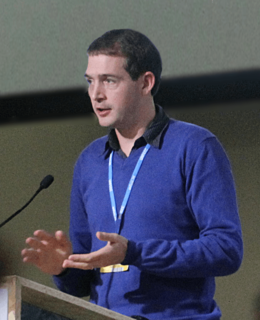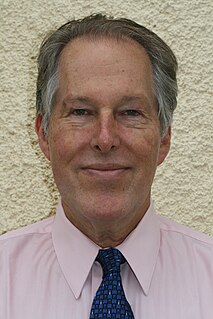 W
WClimate communication or climate change communication is a field of environmental communication and science communication focused on facilitating the communications of the effects of anthropogenic climate change. Most climate communication focuses on bringing knowledge about and potential action for responding to scientific consensus on climate change to a broader public.
 W
WClimate change art is art inspired by climate change and global warming, generally intended to overcome humans' hardwired tendency to value personal experience over data and to disengage from data-based representations by making the data "vivid and accessible". The intention is to "make an emotional connection...through the power of art".
 W
WA climate spiral is an animated data visualization graphic designed as a "simple and effective demonstration of the progression of global warming", especially for general audiences.
 W
WJacquelyn Gill is a paleoecologist and Assistant Professor of climate science at the University of Maine. She has worked on such as the relationship between megafauna and vegetation in the Pleistocene, and the sediment cores of Jamaica. Gill is also a science communicator on climate change.
 W
WSusan Joy Hassol is an American author and science communicator best known for her work around climate change. Hassol is the Director of Climate Communication and was the Senior Science Writer on the first three U.S. National Climate Assessments.
 W
WEdward (Ed) Hawkins is a climate scientist known for his data visualization graphics portraying global warming, especially for general audiences, such as the warming stripes.
 W
WKatharine Anne Scott Hayhoe is an atmospheric scientist and professor of political science at Texas Tech University, where she is director of the Climate Science Center. She is also the CEO of the consulting firm ATMOS Research and Consulting.
 W
WAyana Elizabeth Johnson is a marine biologist, policy expert, and conservation strategist. She was born on August 23, 1980. She grew up in Brooklyn, New York and holds a PhD in marine biology from the Scripps Institution of Oceanography. She is the founder and president of Ocean Collectiv, a consulting firm that helps find ocean "conservation solutions grounded in social justice," and the founder of Urban Ocean Lab, a think tank for climate change and ocean conservation policy in coastal cities.
 W
WKate Marvel is a climate scientist and science writer based in New York City. She is an Associate Research Scientist at NASA Goddard Institute for Space Studies and Columbia Engineering's Department of Applied Physics and Mathematics, and writes regularly for Scientific American in her column "Hot Planet."
 W
WStefan Rahmstorf is a German oceanographer and climatologist. Since 2000, he has been a Professor of Physics of the Oceans at Potsdam University. He received his Ph.D. in oceanography from Victoria University of Wellington (1990). His work focuses on the role of ocean currents in climate change. He was one of the lead authors of the IPCC Fourth Assessment Report.
 W
WGavin A. Schmidt is a climatologist, climate modeler and Director of the NASA Goddard Institute for Space Studies (GISS) in New York, and co-founder of the award-winning climate science blog RealClimate.
 W
WRichard Chapin James Somerville is an American climate scientist who is a Distinguished Professor Emeritus at Scripps Institution of Oceanography at the University of California, San Diego, where he has been a professor since 1979.
 W
WWarming stripes are data visualization graphics that use a series of coloured stripes chronologically ordered to visually portray long-term temperature trends. Warming stripes reflect a "minimalist" style, conceived to use colour alone to avoid technical distractions and intuitively convey global warming trends to non-scientists.